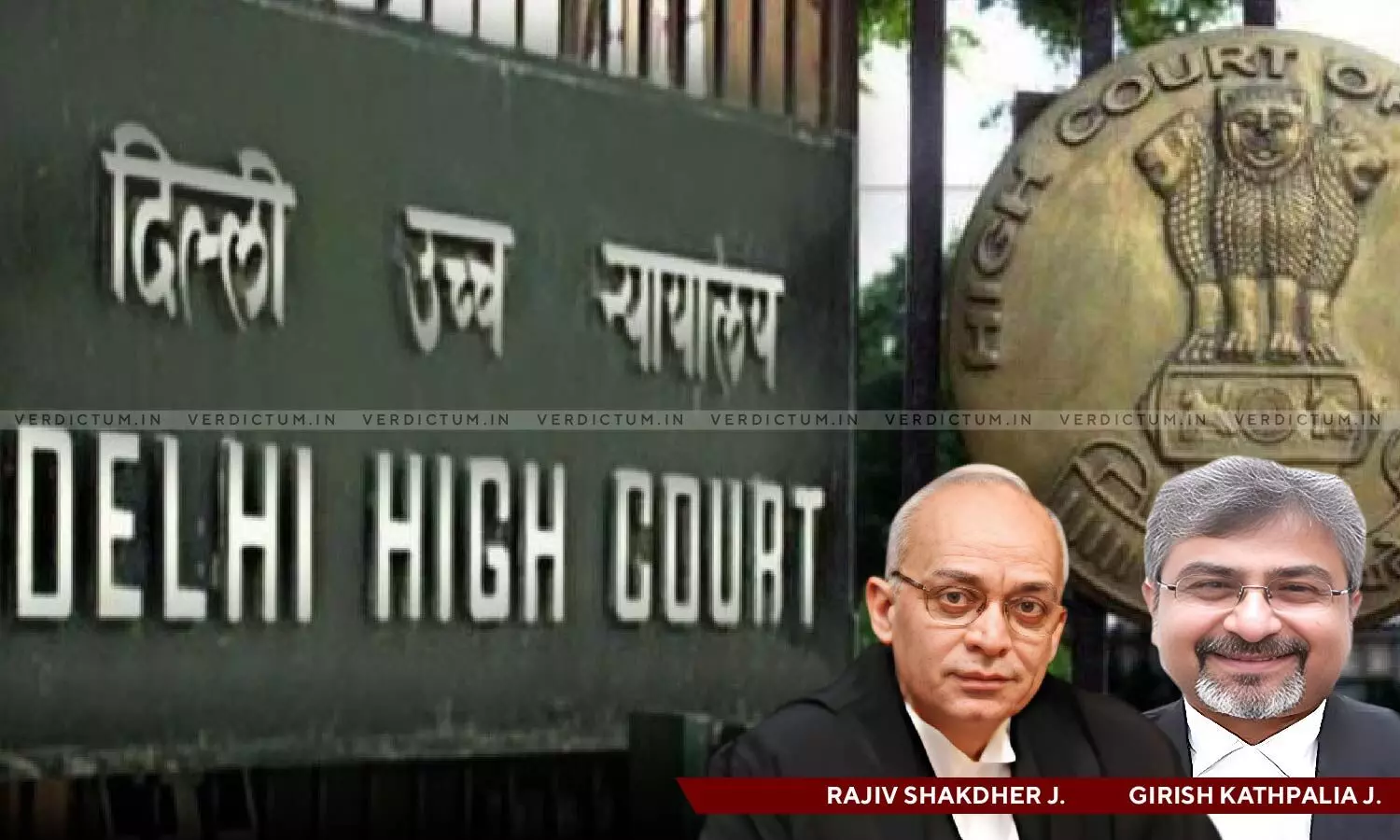
Expression ‘Used For Purposes Of Business’ U/s 32(1) I-T Act Includes Even Passive User Of Machinery: Delhi HC While Granting Depreciation On Telecom Towers
 |
|The Delhi High Court allowed the claim of depreciation on telecom towers to Indus Towers (Assessee) observing that “the expression 'used for the purposes of the business' in Section 32(1) of the Act has to be construed liberally so as to include even passive user of the subject machinery (towers in the present case). It is nobody’s case that the profits earned by the respondent/assessee had no nexus with the towers in question”.
The Division Bench comprising of Justice Rajiv Shakdher and Justice Girish Kathpalia observed that “the loan in question was raised by the respondent/assessee only for the purposes of its business, merely because the loan processing charges though paid upfront but amortized over a period of five years, solely to be in consonance with the mercantile system of accounting, deduction of the entire charges in lump sum in the year in which the same were paid could not be denied to the respondent/assessee”.
Advocate Rohit Jain appeared for the Assessee, whereas Advocate Zoheb Hossain appeared for the Revenue.
The assessee company was incorporated as a joint venture company of Bharti Infratel Limited, Vodafone Essar Limited and Aditya Birla Telecom Limited with its main object to share the telecom infrastructure amongst various telecom service providers. The assessee operated through various telecom sites out of which some sites were under indefeasible rights to use. While filing its return, the assessee declared loss of approximately Rs.452 Crore which was subsequently revised to loss of around Rs.612 Crore after including unabsorbed depreciation. Later, the assessee was subject to scrutiny wherein the loss was assessed at approximately Rs.292 Crore.
During assessment, the AO made addition regarding interest on borrowed funds used for constructing towers, and held that all the towers erected by the assessee were not put to use, hence, interest expenses were capitalised. The AO also made addition with respect to depreciation for the towers which were not put to use, since the assessee had failed to submit tower-wise detail 50% depreciation on towers was disallowed. The AO further made addition account of loan processing fee of Rs.20.75 Crore which was claimed 100% in the return of income, however, was amortised in the books of account and only Rs.4.45 Crore was debited in the Profit & Loss Account during the relevant year.
On appeal, the CIT(A) allowed the claim of the assessee for the first two grounds considering additional evidences i.e. ready for active installation certificate issued by the third party engineers and service tax returns in respect of the towers, however disallowed entire loan processing fees holding that the funds were utilized for acquisition of capital assets. On further appeal, the ITAT confirmed CIT(A)’s order for first two additions and allowed full loan processing fees considering it as regular business expenditure.
After considering the submission and referring to Section 43B(d) and Section 36 of the Income Tax Act, 1961 as per which interest is allowable in the year in which it is paid and the capital borrowed is used for the purpose of business, the Bench allowed the claim of interest of Rs.123 Crore.
Thus, the Bench clarified that any sum payable by the assessee as interest on any loan from any financial institution shall be allowed as deduction to the assessee in the year in which the same is paid irrespective of the provisions in which the liability to pay such sum is incurred by the assessee according to the method of accounting regularly applied by the assessee.
The Bench also allowed the claim of loan processing fees of approximately Rs.16.29 Crore observing that the loan was used only for the purposes of its business.
Additionally, the Bench emphasized that where the assessee, following the mercantile system of accounting claims in the return of income deduction of upfront interest charges paid during the relevant financial year and the said upfront interest payment is shown by the assessee in accounts as deferred revenue expenditure to be written off over a period of number of years, the assessee would be entitled to deduction of the full amount in the Assessment Year in which it is paid.
The Bench also observed that “the expression “used for the purposes of business or profession” in the provision under Section 32 of the Act has to be construed widely by including in it not only those cases where the buildings, machinery, plant etc are actively employed but also those cases where there is, what may be described as a passive user of the same in the business because of various reasons including that a machinery may well depreciate even where it is not used in the business and even due to non-user and being kept idle”.
As far as interest on borrowed funds are concerned, the Bench noted that the construction of towers began in April, 2008 whereas the Indefeasible Right to Use (IRU) Agreement was executed on Jan 1, 2009, therefore, the I-T Dept. was factually incorrect in observing that the assessee had commenced business through lease of towers under IRU Agreement.
The Bench further observed that a telecom site is ready to use even before the suppliers of various material are paid, hence, no loan needs to be drawn when the site is under construction.
Since there was no adverse finding to the effect that expenses related to loan were not utilized for business, the Bench held that it is rightly claimed as revenue expenditure.
Lastly, the Bench also allowed the claim of loan processing fees in entirety as loan was used for purpose of business even if the same was amortised in the books of account over a period.
Cause Title: PCIT v. Indus Towers Ltd [Neutral Citation: 2023: DHC: 7834-DB]
Click here to read/download the Order